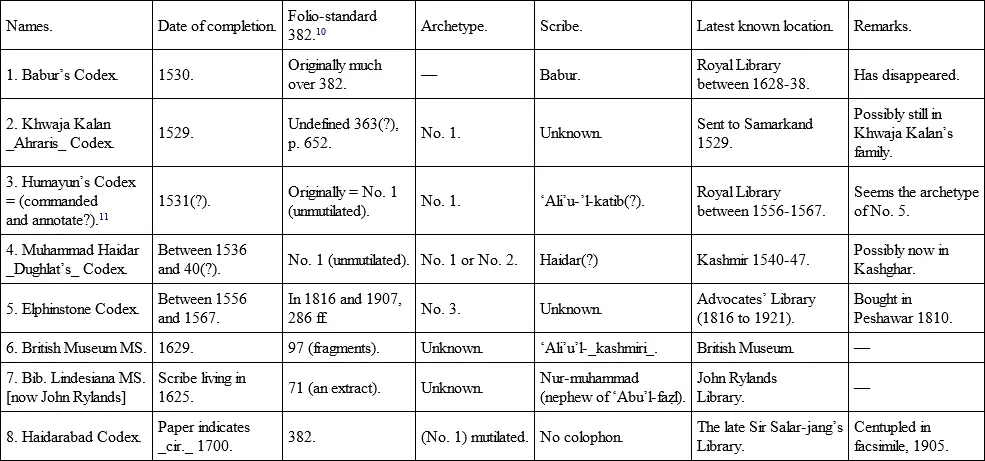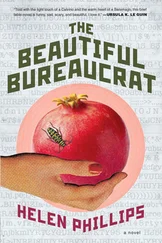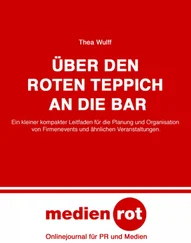Babur - The Bābur-nāma
Здесь есть возможность читать онлайн «Babur - The Bābur-nāma» — ознакомительный отрывок электронной книги совершенно бесплатно, а после прочтения отрывка купить полную версию. В некоторых случаях можно слушать аудио, скачать через торрент в формате fb2 и присутствует краткое содержание. Жанр: foreign_antique, foreign_prose, на английском языке. Описание произведения, (предисловие) а так же отзывы посетителей доступны на портале библиотеки ЛибКат.
- Название:The Bābur-nāma
- Автор:
- Жанр:
- Год:неизвестен
- ISBN:нет данных
- Рейтинг книги:4 / 5. Голосов: 1
-
Избранное:Добавить в избранное
- Отзывы:
-
Ваша оценка:
- 80
- 1
- 2
- 3
- 4
- 5
The Bābur-nāma: краткое содержание, описание и аннотация
Предлагаем к чтению аннотацию, описание, краткое содержание или предисловие (зависит от того, что написал сам автор книги «The Bābur-nāma»). Если вы не нашли необходимую информацию о книге — напишите в комментариях, мы постараемся отыскать её.
The Bābur-nāma — читать онлайн ознакомительный отрывок
Ниже представлен текст книги, разбитый по страницам. Система сохранения места последней прочитанной страницы, позволяет с удобством читать онлайн бесплатно книгу «The Bābur-nāma», без необходимости каждый раз заново искать на чём Вы остановились. Поставьте закладку, и сможете в любой момент перейти на страницу, на которой закончили чтение.
Интервал:
Закладка:
Useful reconstruction if merely in tabulated form, might be effected in a future edition. It would save at least two surprises for readers, one the oddly abrupt first sentence telling of Babur’s age when he became ruler in Farghana (p. 1), which is a misfit in time and order, another that of the sudden interruption of ‘Umar Shaikh’s obituary by a fragment of Yunas Khan’s (p. 19) which there hangs on a mere name-peg, whereas its place according to Babur’s elsewhere unbroken practice is directly following the death. The record of the missing præ-accession years will have included at the least as follows: – Day of birth and its place – names and status of parents – naming and the ceremonial observances proper for Muhammadan children – visits to kinsfolk in Tashkint, and to Samarkand (æt. 5, p. 35) where he was betrothed – his initiation in school subjects, in sport, the use of arms – names of teachers – education in the rules of his Faith (p. 44), appointment to the Andijan Command etc. , etc.
There is now no fit beginning to the book; the present first sentence and its pendent description of Farghana should be removed to the position Babur’s practice dictates of entering the description of a territory at once on obtaining it (cf. Samarkand, Kabul, Hindustan). It might come in on p. 30 at the end of the topic (partly omitted on p. 29 where no ground is given for the manifest anxiety about Babur’s safety) of the disputed succession (Haidar, trs. p. 135) Babur’s partisan begs having the better of Jahangir’s ( q. v. ), and having testified obeisance, he became ruler in Farghana; his statement of age (12 years), comes in naturally and the description of his newly acquired territory follows according to rule. This removal of text to a later position has the advantage of allowing the accession to follow and not precede Babur’s father’s death.
By the removal there is left to consider the historical matter of pp. 12-13. The first paragraph concerns matter of much earlier date than ‘Umar’s death in 1494 (p. 13); it may be part of an obituary notice, perhaps that of Yunas Khan. What follows of the advance of displeased kinsmen against ‘Umar Shaikh would fall into place as part of Babur’s record of his boyhood, and lead on to that of his father’s death.
The above is a bald sketch of what might be effected in the interests of the book and to facilitate its pleasant perusal.
Chapter III.
THE TURKI MSS. AND WORK CONNECTING WITH THEM
This chapter is a literary counterpart of “Babur Padshah’s Stone-heap,” the roadside cairn tradition says was piled by his army, each man laying his stone when passing down from Kabul for Hindustan in the year of victory 1525 (932). 8 8 p. 446, n. 6. Babur’s order for the cairn would fit into the lost record of the first month of the year (p. 445).
For a title suiting its contents is “Babur Padshah’s Book-pile,” because it is fashioned of item after item of pen-work done by many men in obedience to the dictates given by his book. Unlike the cairn, however, the pile of books is not of a single occasion but of many, not of a single year but of many, irregularly spacing the 500 years through which he and his autobiography have had Earth’s immortality.
Part I. The MSS. themselves
Preliminary. – Much of the information given below was published in the Journal of the Royal Asiatic Society from 1900 onwards, as it came into my possession during a search for reliable Turki text of the Babur-nama . My notes were progressive; some MSS. were in distant places, some not traceable, but in the end I was able to examine in England all of whose continued existence I had become aware. It was inevitable that some of my earlier statements should be superseded later; my Notes ( see s.n. JRAS.) need clearing of transitory matter and summarizing, in particular those on the Elphinstone Codex and Klaproth’s articles. Neither they nor what is placed here makes claim to be complete. Other workers will supplement them when the World has renewed opportunity to stroll in the bye-paths of literature.
Few copies of the Babur-nama seem to have been made; of the few I have traced as existing, not one contains the complete autobiography, and one alone has the maximum of dwindled text shewn in the Persian translation (1589). Two books have been reputed to contain Babur’s authentic text, one preserved in Hindustan by his descendants, the other issuing from Bukhara. They differ in total contents, arrangement and textual worth; moreover the Bukhara book compiles items of divers diction and origin and date, manifestly not from one pen.
The Hindustan book is a record – now mutilated – of the Acts of Babur alone; the Bukhara book as exhibited in its fullest accessible example, Kehr’s Codex, is in two parts, each having its preface, the first reciting Babur’s Acts, the second Humayun’s.
The Bukhara book is a compilation of oddments, mostly translated from compositions written after Babur’s death. Textual and circumstantial grounds warrant the opinion that it is a distinct work mistakenly believed to be Babur’s own; to these grounds was added in 1903 the authoritative verdict of collation with the Haidarabad Codex, and in 1921 of the colophon of its original MS. in which its author gives his name, with the title and date of his compilation (JRAS. 1900, p. 474). What it is and what are its contents and history are told in Part III of this chapter.
Part II. Work on the Hindustan MSS
My latest definite information about Babur’s autograph MS. comes from the Padshah-nama (Bib. Ind. ed. ii, 4), whose author saw it in Shah-i-jahan’s private library between 1628 and 1638. Inference is justified, however, that it was the archetype of the Haidarabad Codex which has been estimated from the quality of its paper as dating cir. 1700 (JRAS. 1906, p. 97). But two subsequent historic disasters complicate all questions of MSS. missing from Indian libraries, namely, Nadir Shah’s vengeance on Dihli in 1739 and the dispersions and fires of the Mutiny. Faint hope is kept alive that the original Codex may have drifted into private hands, by what has occurred with the Rampur MS. of Babur’s Hindustan verses (App. J), which also appears once to have belonged to Shah-i-jahan.
I
Amongst items of work done during Babur’s life are copies of his book (or of the Hindustan section of it) he mentions sending to sons and friends.
II
The Tabaqat-i-baburi was written during Babur’s life by his Persian secretary Shaikh Zainu’d-din of Khawaf; it paraphrases in rhetorical Persian the record of a few months of Hindustan campaigning, including the battle of Panipat.
Table of the Hindustan MSS. of the Babur-nama. 9 9 Parts of the Babur-nama sent to Babur’s sons are not included here.

Примечание 1 10 10 The standard of comparison is the 382 fols. of the Haidarabad Codex.
Примечание 2 11 11 This MS. is not to be confused with one Erskine misunderstood Humayun to have copied ( Memoirs , p. 303 and JRAS. 1900, p. 443).
III
During the first decade of Humayun’s reign (1530-40) at least two important codices seem to have been copied.
The earlier ( see Table, No. 2) has varied circumstantial warrant. It meets the need of an archetype, one marginally annotated by Humayun, for the Elphinstone Codex in which a few notes are marginal and signed, others are pell-mell, interpolated in the text but attested by a scrutineer as having been marginal in its archetype and mistakenly copied into its text. This second set has been ineffectually sponged over. Thus double collation is indicated (i) with Babur’s autograph MS. to clear out extra Babur matter, and (ii) with its archetype, to justify the statement that in this the interpolations were marginal. – No colophon survives with the much dwindled Elph. Codex, but one, suiting the situation, has been observed, where it is a complete misfit, appended to the Alwar Codex of the second Persian translation, (estimated as copied in 1589). Into the incongruities of that colophon it is not necessary to examine here, they are too obvious to aim at deceit; it appears fitly to be an imperfect translation from a Turki original, this especially through its odd fashion of entitling “Humayun Padshah.” It can be explained as translating the colophon of the Codex (No. 2) which, as his possession, Humayun allowably annotated and which makes it known that he had ordered ‘Ali’u-’l-katib to copy his father’s Turki book, and that it was finished in February, 1531, some six weeks after Babur’s death. 12 12 For precise limits of the original annotation see p. 446 n. – For details about the E. Codex see JRAS. 1907, art. The Elph. Codex , and for the colophon AQR. 1900, July, Oct. and JRAS. 1905, pp. 752, 761.
Интервал:
Закладка:
Похожие книги на «The Bābur-nāma»
Представляем Вашему вниманию похожие книги на «The Bābur-nāma» списком для выбора. Мы отобрали схожую по названию и смыслу литературу в надежде предоставить читателям больше вариантов отыскать новые, интересные, ещё непрочитанные произведения.
Обсуждение, отзывы о книге «The Bābur-nāma» и просто собственные мнения читателей. Оставьте ваши комментарии, напишите, что Вы думаете о произведении, его смысле или главных героях. Укажите что конкретно понравилось, а что нет, и почему Вы так считаете.











